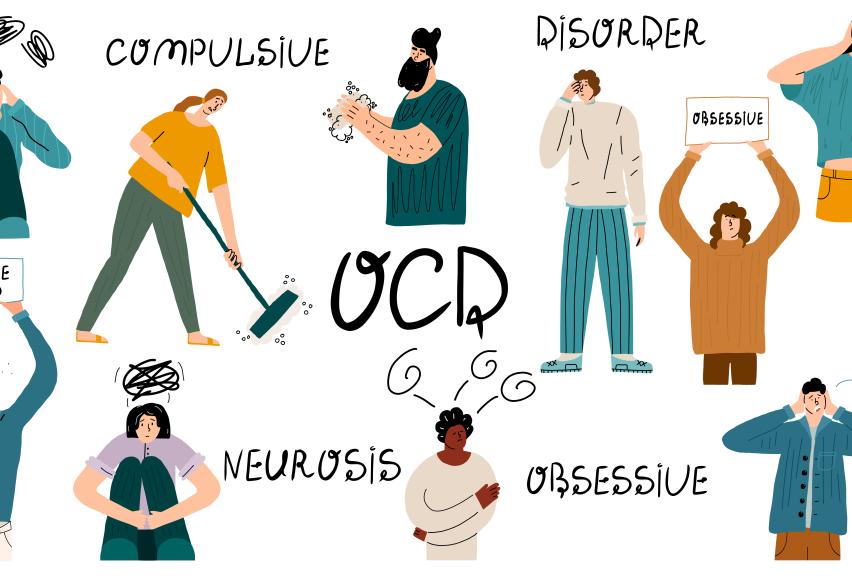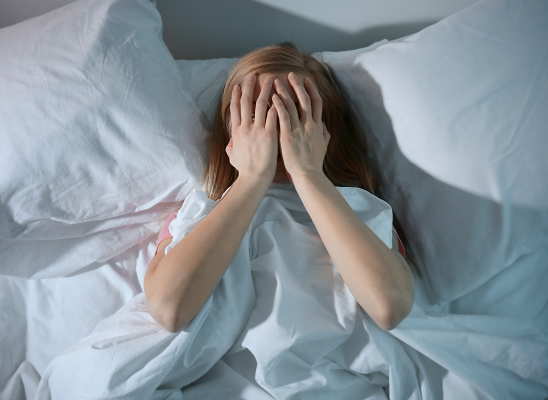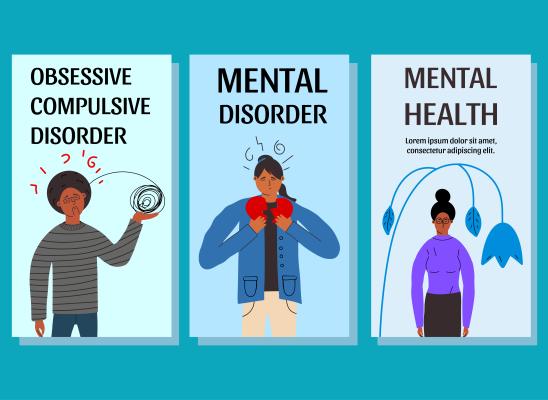
Online test
Find out the severity of your symptoms with this free online test
Obsessive-Compulsive Disorder (OCD) is a disorder characterized by a cycle of obsessions and compulsions that significantly interfere with your ability to function in everyday life. Included in the same category of disorders are body-focused repetitive disorders (BFRBs) including trichotillomania (hair-pulling) and excoriation disorder (skin picking). The DSM 5 recognizes BFRBs as OCD-Related disorders, similar to but not the same as OCD.
As with any disorder, people experience symptoms in different ways. For some, symptoms are bothersome but manageable. For others, symptoms can become so intrusive that they become all-encompassing, and the person struggles to function in their daily lives. Some people experience more obsessive symptoms while others struggle more with compulsions. The focus of the obsession or compulsion varies from person to person. It is this heterogeneity or individual differences that have prompted interest in identifying treatments that are specific to how symptoms present as opposed to a one-size-fits-all. A recent study takes a closer look at the research on some of the most effective treatments for OCD and OCD-related disorders.
Behavioral Therapies
Behavior-based therapies are the first-line intervention for OCD and related disorders such as hair pulling, skin picking, and even hoarding behaviors. Which one is the “right” one depends on the clinical picture. Here are the most often used behavioral interventions.
Exposure and Response Prevention (ERP) is the current first-line treatment for OCD. The goal of ERP is to break the cycle of fear and avoidance that drives obsessive and compulsive behaviors and improve distress tolerance. By eliminating the behavior rituals and avoidance behaviors, people can learn how to tolerate distressing feelings without resorting to counterproductive behaviors. They learn how to challenge their existing fears, distortions in thinking, and responses. In short, instead of avoiding anxiety-provoking situations (exposure), people learn to not respond (response prevention) to the trigger.
Cognitive Behavioral Therapy (CBT) is one of the most widely used approaches to psychotherapy and is often combined with ERP in the treatment of OCD. While ERP is considered to be a behavioral intervention, CBT offers the additional benefit of addressing the cognitive aspects of a disorder. CBT helps you identify and change distorted patterns of thinking and behaviors that can negatively affect how you feel.
ERP is highly effective in reducing compulsions, especially for compulsions related to contamination. The combination of ERP and CBT seems to be more effective in reducing obsessions, especially those related to cleaning and harm. CBT is also highly effective in the treatment of OCD-related disorders including hair pulling and skin picking.
Habit Reversal Training (HRT) is an evidence-based form of CBT that helps people to reduce unwanted repetitive behaviors by becoming more aware of the cues that the behavior is about to happen and replacing those unwanted behaviors with new more desirable ones. OCD-related disorders like hair pulling and skin picking seem to involve problems with inhibition and impulse control with the behaviors aimed more at relieving distress than avoiding intrusive thoughts. HRT, and an enhanced HRT protocol – the Comprehensive Behavioral Model (ComB), are particularly effective, and considered the gold standard, in treating these disorders. For OCD, HRT is sometimes combined with ERP.
Acceptance And Commitment Therapy (ACT) has also been used as a treatment for OCD and obsessive-related disorders, often combined with other modalities. ACT teaches people to be present and observe their thoughts and feelings without reacting or avoiding (acceptance) and respond with behaviors more aligned with their values (commitment).
Medications
Medications are usually not the first line of treatment for OCD and related disorders. That’s not to say that medication does not have a place in treatment. In fact, medications have shown to be helpful in symptom reduction when therapy alone has not been sufficient. Medication is generally used to augment other treatment interventions rather than as a stand-alone treatment.
Several classes of medications have been explored for use with OCD and related disorders. Antidepressants, neuroleptics, anti-anxiety medications and even antipsychotic medications for resistant, severe OCD have shown varying degrees of efficacy. Two that are particularly helpful are Selective Serotonin Reuptake Inhibitors (SSRIs) and glutamate modulators.
OCD has been linked to dysfunctional serotonin pathways in the brain. Anti-depressants, in particular SSRIs, have been shown to reduce symptoms in OCD and even in some OCD-related disorders such as hoarding and hair pulling.
Glutamate disruption has been linked to OCD and OCD-related disorders, including hair pulling. Glutamate is an important neurotransmitter associated with inhibitory control. Glutamate modulators, in particular, N-acetylcysteine (NAC), have been shown to reduce symptoms of OCD. Studies have also found that NAC may help to reduce hair pulling for people living with trichotillomania.
So, What Works?
When it comes to treating OCD and related disorders, there is no single “gold standard” or single approach. So much depends on the person’s unique clinical presentation and needs. The research review suggests that therapy sometimes augmented by medication seems to offer relief for many people. As research continues, we are learning more about OCD and OCD-related disorders. Continuing research offers hope for effective and innovative interventions that can make a difference for people living with OCD.
References
1. Krzyszkowiak, W., Kuleta-Krzyszkowiak, M., & Krzanowska, E. (2019). Treatment of obsessive-compulsive disorders (OCD) and obsessive-compulsive-related disorders (OCRD). Leczenie zaburzeń obsesyjno-kompulsyjnych (OCD) i zaburzeń powiązanych (OCRD). Psychiatria polska, 53(4), 825–843. https://doi.org/10.12740/PP/105130
2. Hezel, D. M., & Simpson, H. B. (2019). Exposure and response prevention for obsessive-compulsive disorder: A review and new directions. Indian journal of psychiatry, 61(Suppl 1), S85–S92. https://www.ncbi.nlm.nih.gov/pmc/articles/PMC6343408/
3. Kellner M. (2010). Drug treatment of obsessive-compulsive disorder. Dialogues in clinical neuroscience, 12(2), 187–197. https://doi.org/10.31887/DCNS.2010.12.2/mkellner
4. Stewart, S. E., Jenike, E. A., Hezel, D. M., Stack, D. E., Dodman, N. H., Shuster, L., & Jenike, M. A. (2010). A single-blinded case-control study of memantine in severe obsessive-compulsive disorder. Journal of clinical psychopharmacology, 30(1), 34–39. https://doi.org/10.1097/JCP.0b013e3181c856de
5. Grant, J. E., Odlaug, B. L., & Kim, S. W. (2009). N-acetylcysteine, a glutamate modulator, in the treatment of trichotillomania: a double-blind, placebo-controlled study. Archives of general psychiatry, 66(7), 756–763. https://doi.org/10.1001/archgenpsychiatry.2009.60
Online test
Find out the severity of your symptoms with this free online test
Start your journey with StopOCD
Take control of your life and find freedom from OCD through professional therapy and evidence-based cognitive behavioral techniques.
Start Now



